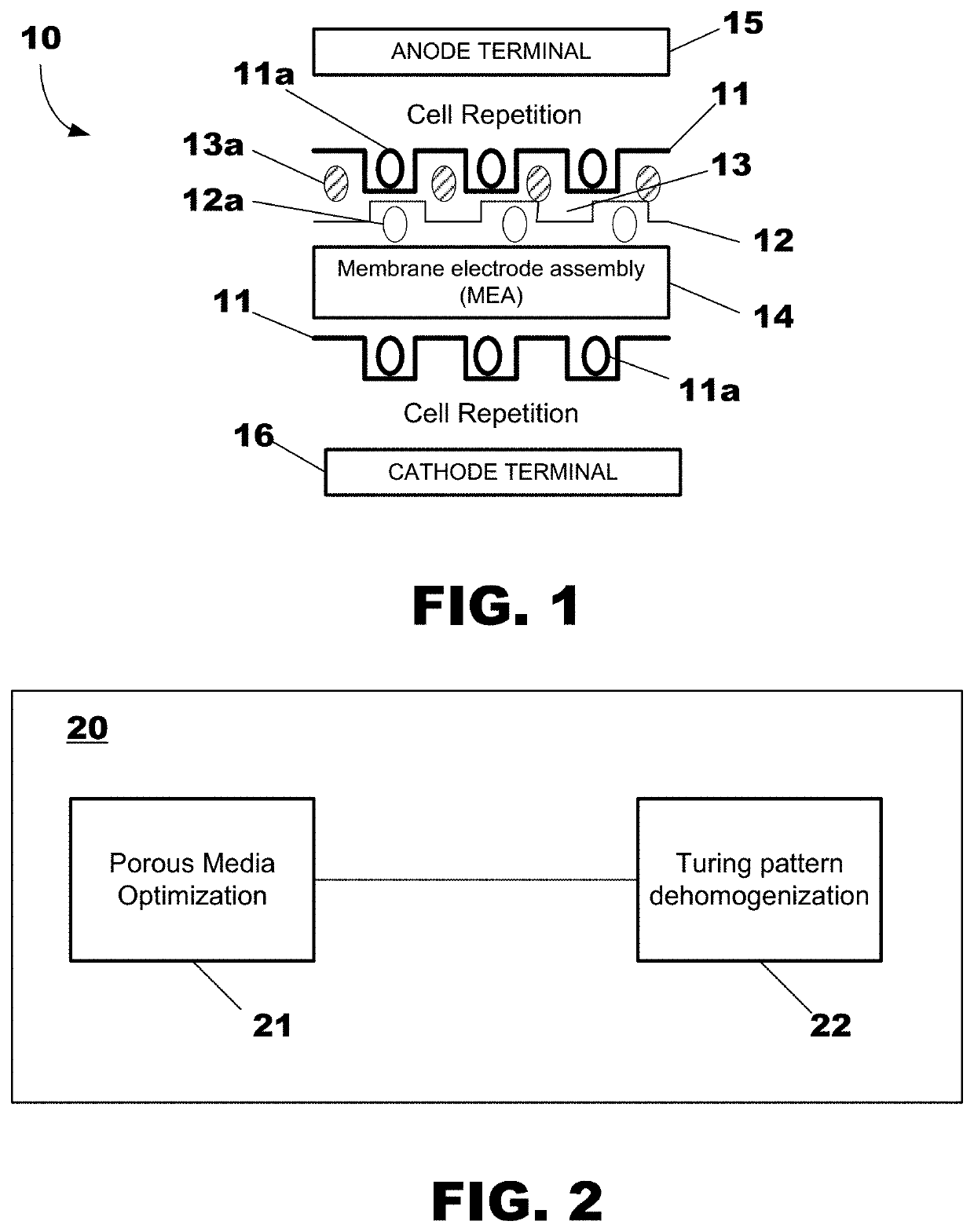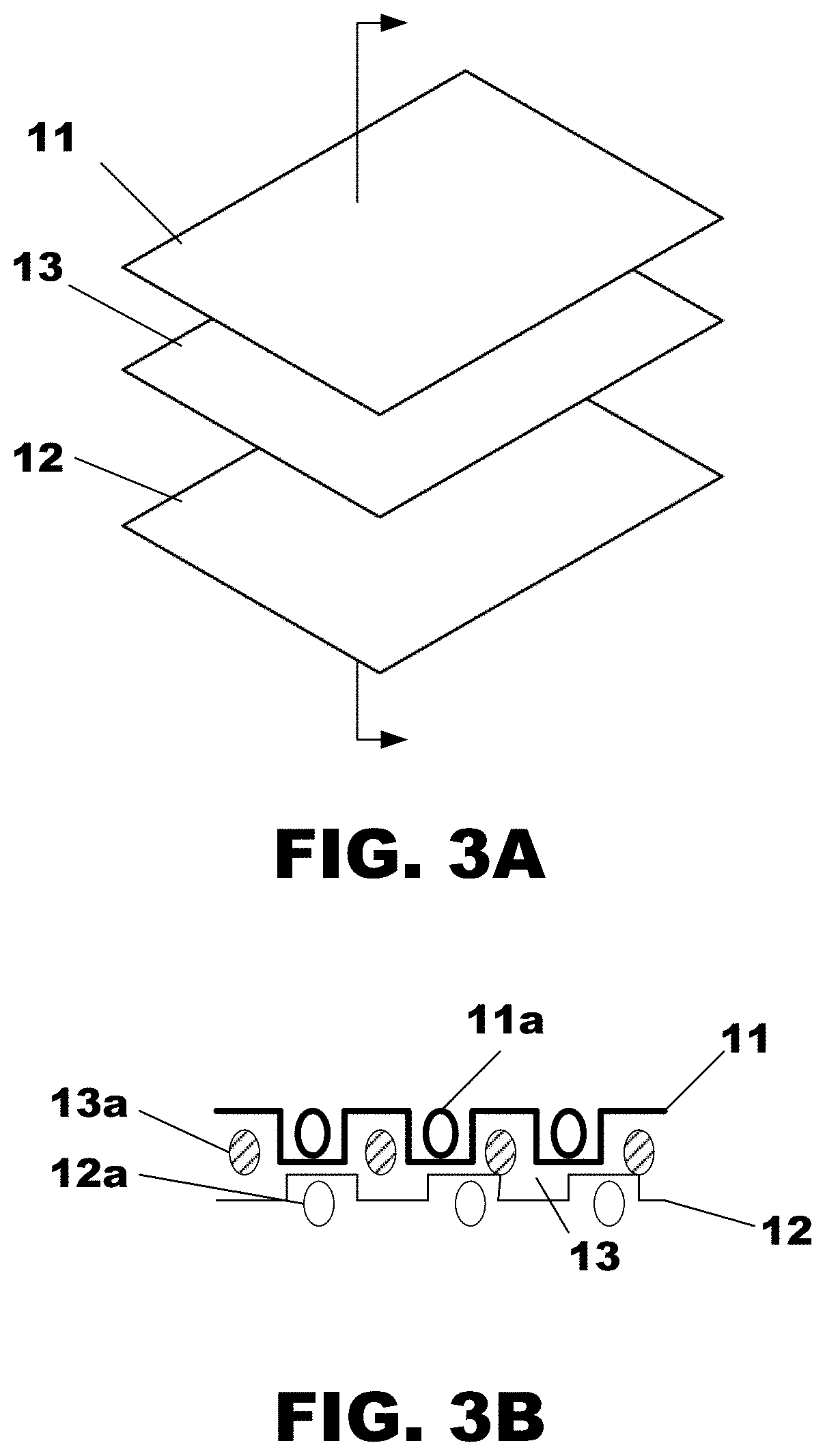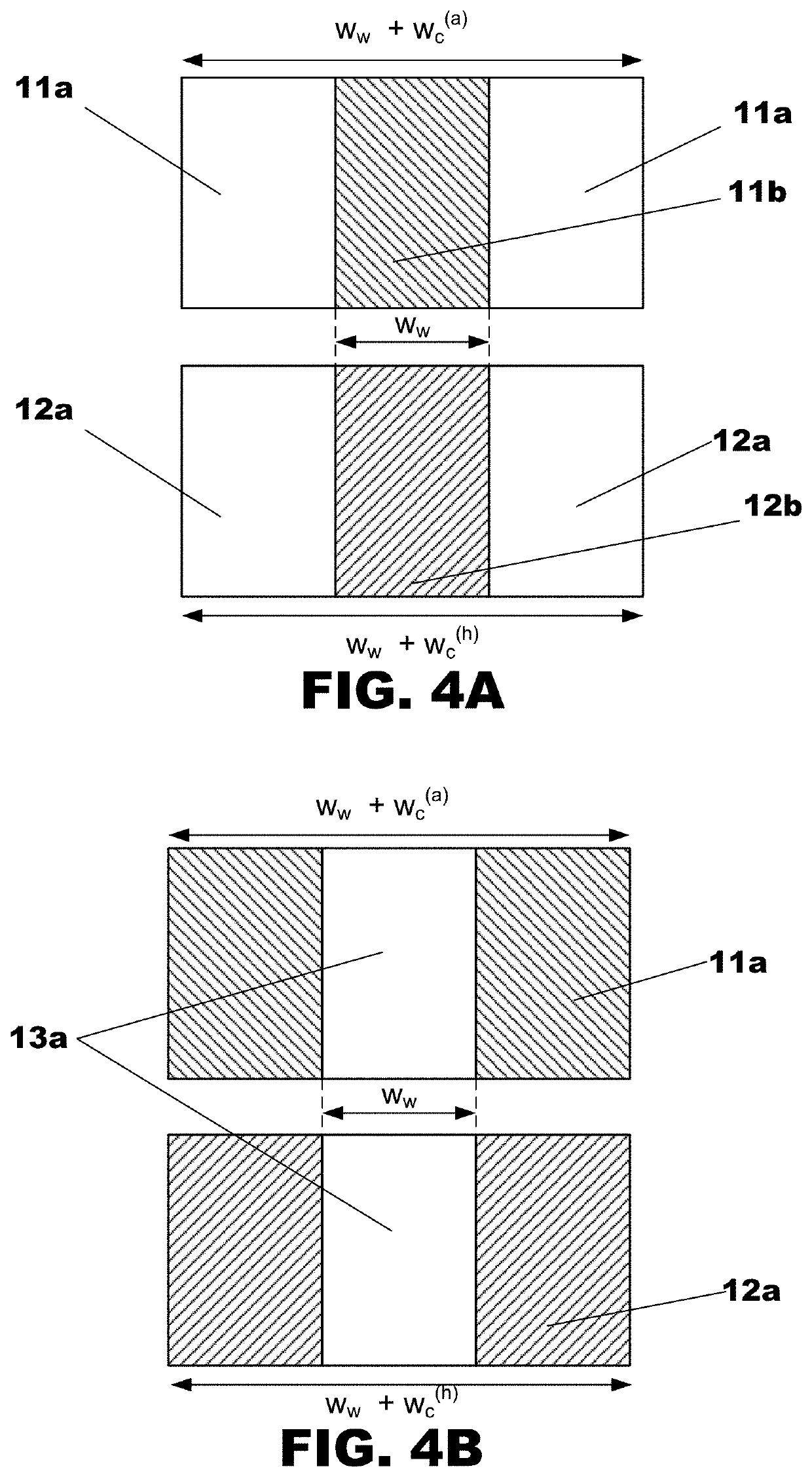Method of design of fuel cell fluid flow networks
a technology of fluid flow and fuel cell, applied in the direction of fuel cells, electrical appliances, electrochemical generators, etc., can solve the problems of inefficient fc stack performance, narrow or completely blocked cooling channels, and inconvenient design of fuel cell fluid flow networks, so as to reduce computational efforts
- Summary
- Abstract
- Description
- Claims
- Application Information
AI Technical Summary
Benefits of technology
Problems solved by technology
Method used
Image
Examples
examples
[0078]To demonstrate the proposed method, a multi-layer FC design example is used. FIG. 5 illustrates an example of design and analysis domains at the air layer 11, the hydrogen layer 12, and the coolant layer 13. Design fields ϕ(a) and ϕ(h) are assigned to the air domain D(a) and the hydrogen domain D(h). As illustrated in FIG. 5, at the air layer 11, air is supplied from the upper right inlet. At the hydrogen layer 12, hydrogen is supplied from the upper left inlet. Air and hydrogen travel across the entire plate before leaving the system through the outlets located at opposite corners. Such cross-flow configuration is designed to facilitate the mixture of reactants.
[0079]At the coolant layer 13, coolant flows in the same direction as the air flow. Coolant enters the FC stack from the middle right inlet, and leaves the system via the middle left outlet. Since the hydrogen supply is often sufficient due to its high concentration, the reaction rate inside FC stacks is dominated by t...
PUM
| Property | Measurement | Unit |
|---|---|---|
| microstructures | aaaaa | aaaaa |
| permeability | aaaaa | aaaaa |
| diffusion coefficient | aaaaa | aaaaa |
Abstract
Description
Claims
Application Information
 Login to View More
Login to View More - R&D
- Intellectual Property
- Life Sciences
- Materials
- Tech Scout
- Unparalleled Data Quality
- Higher Quality Content
- 60% Fewer Hallucinations
Browse by: Latest US Patents, China's latest patents, Technical Efficacy Thesaurus, Application Domain, Technology Topic, Popular Technical Reports.
© 2025 PatSnap. All rights reserved.Legal|Privacy policy|Modern Slavery Act Transparency Statement|Sitemap|About US| Contact US: help@patsnap.com



